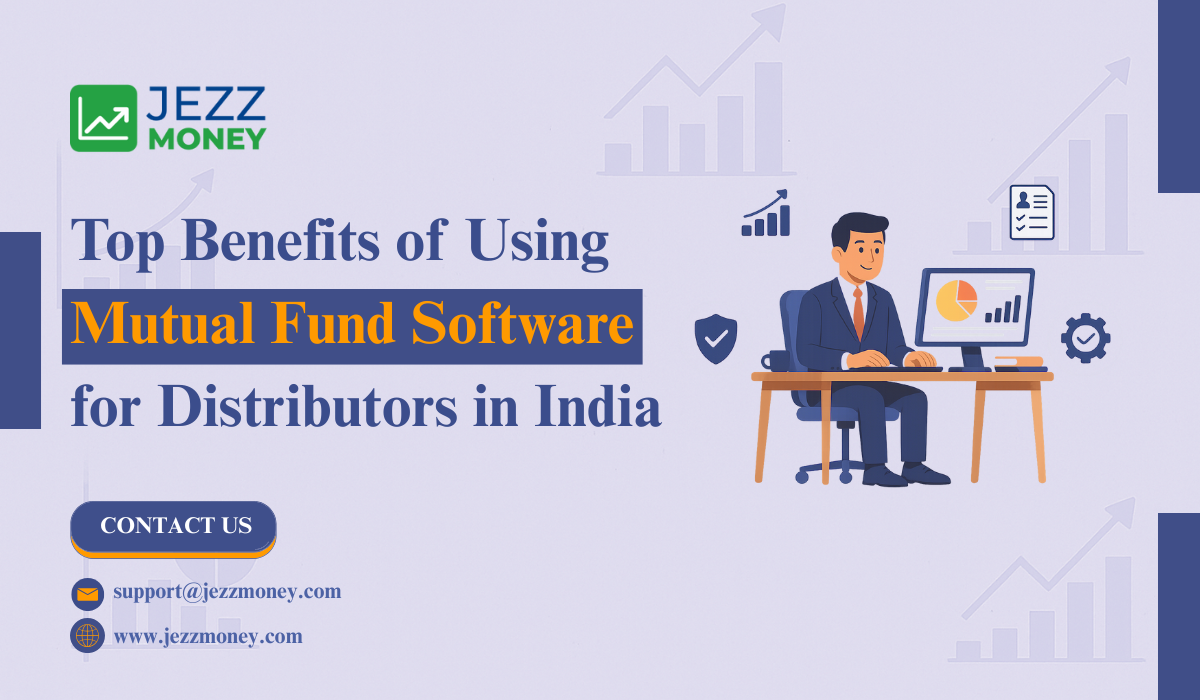Trust The ELSS Mutual Funds for Your Financial Security

Strong 8k brings an ultra-HD IPTV experience to your living room and your pocket.
Introducing the Best ELSS Funds
Did you know a mutual fund category that saves your tax and money as well? Yes, the ELSS Mutual Funds does just that. Investing in Equity Linked Savings Scheme (ELSS) Mutual Funds is an excellent strategy to ensure one's financial future while saving money on taxes. In this post, you will look at the important characteristics of ELSS funds, such as their wealth growth potential, tax benefits, and top-performing funds.
✍️ Many investors overlook expense ratios, but they directly affect returns. Learn why low-cost mutual funds, especially index funds, are gaining traction among savvy investors worldwide.
You will also explore the dangers of investing in ELSS funds and how investors could prevent them. So, let's go into the world of the best tax-saving mutual funds and see how they might help investors attain their financial goals.
What are ELSS Mutual Funds?
ELSS MFs are similar to special tools of money expertly managed by professionals. These funds are structured to have money invested in various companies, including large, medium-sized, and even smaller ones. This diversification serves to spread the risk and provides your money with an opportunity to grow.
Now, why are they referred to as "saving schemes"? Well, it's because they possess the power to save money on taxes. When an investor invests in ELSS Funds Schemes, the government allows the reduction of the amount of tax required to pay. It's exactly like receiving a tax discount simply because informed decisions were made to reduce tax liability.
Thus, the top 10 ELSS Funds represent an intelligent approach to investing money. They distribute it among various types of companies while assisting you in tax savings. It's a situation where investments and wallets benefit from a win-win scenario.
The 3 benefits of ELSS Fund Schemes
Here are the prime benefits of investing in the best tax saving mutual funds via SIP (systematic investment plan):
Wealth Growth
By making thoughtful investments in a diverse portfolio of companies, ELSS Fund schemes are intended to produce compound growth returns, usually in the range of 15%.
The goal of this strategy is to take advantage of the possible growth prospects present in the equity markets.
ELSS funds invest in a variety of stocks with varying market capitalizations and sectors to optimize returns for investors over the long run.
That is the reason ELSS funds are a desirable choice for people who want to increase their wealth gradually.
Tax Savings
One of the primary benefits of investing in ELSS funds is the tax-saving benefits provided by Section 80C of the Income Tax Act.
Investors can deduct the amount invested in ELSS funds from their taxable income, up to a maximum of RS 1.5 lakh.
This not only helps to reduce the investor's tax bill but also provides an opportunity for effective tax planning.
Individuals trying to maximize their investment portfolio and limit tax outflows.
It favours ELSS funds because they allow them to save taxes while also investing in stock markets.
Shorter Lock-in Period
Another notable aspect of ELSS Mutual Funds is the three-year lock-in period.
While investors are expected to keep their assets invested for the duration of the lock-in term.
ELSS provides more flexibility than other tax-saving choices such as the Public Provident Fund (PPF) or the National Savings Certificate.
This shorter lock-in time enables investors to access their cash sooner if necessary and allows for more regular analysis and reallocation of investments.
As a result, investors can benefit from the potential wealth-building provided by ELSS funds while retaining some liquidity and flexibility in their investment plan.
10 Best ELSS Funds to Invest via SIP
Here are the top 10 ELSS funds for your systematic investment plan in your mutual funds journey:
DSP ELSS Tax Saver Fund
Launch date: 05.01.2007
AUM: 14,147 Cr (as of 29.02.24)
CAGR: 15.05%
Benchmark: Nifty 500 TRI
Invesco India ELSS Tax Saver Fund
Launch date: 29.12.2006
AUM: 2,544.51 Cr (as of 29.02.24)
CAGR: 14.48%
Benchmark: S&P BSE 500 TRI
Bandhan ELSS Tax Saver Fund
Launch date: 26.12.2008
AUM: 6,139.72 Cr (as of 29.02.24)
CAGR: 18.59%
Benchmark: S&P BSE 500 TRI
Parag Parikh ELSS Tax Saver Fund
Launch date: 05.07.2019
AUM: 2,997.16 Cr (as of 29.02.24)
CAGR: 23.03%
Benchmark: Nifty 500 TRI
Quant ELSS Tax Saver Fund
Launch date: 01.04.2000
AUM: 7,769.92 Cr (as of 29.02.24)
CAGR: 15.77%
Benchmark: Nifty 500 TRI
Kotak ELSS Tax Saver Fund
Launch date: 01.11.2005
AUM: 5,050.36 Cr (as of 29.02.24)
CAGR: 13.28%
Benchmark: Nifty 500 TRI
ICICI Prudential ELSS Tax Saver Fund
Launch date: 19.08.1999
AUM: 12,894.81 Cr (as of 29.02.24)
CAGR: 19.33%
Benchmark: Nifty 500 TRI
Motilal Oswal ELSS Tax Saver Fund
Launch date: 05.01.2015
AUM: Rs.,414 Cr (as of 31.12.2024)
CAGR: 16.71%
Benchmark: Nifty 500 TRI
SBI Long Term Equity Fund
Launch date: 31.03.1993
AUM: Rs.27,791 Cr (as of 31.12.24)
CAGR: 12.36%
Benchmark: BSE 500 TRI
HDFC ELSS Tax Saver
Launch date: 05.03.1996
AUM: Rs.15,728 Cr (as of 31.12.24)
CAGR: 21.76%
Benchmark: Nifty 500 TRI
The above-given, top 10 ELSS funds are your best tax saving mutual funds for 2025.
What are the Risk Barriers to Investing in ELSS Mutual Funds?
Here are some precautions that you can take to minimize risk on your best tax saving mutual funds:
Market Risk
ELSS mutual funds invest largely in equities, they are exposed to market volatility. Equity markets are uncertain, and
The value of investments held by ELSS funds can fluctuate dramatically depending on market conditions.
Economic factors, geopolitical events, and company performance can all have an impact on stock prices, causing ELSS fund NAVs to fluctuate.
While market volatility creates possibilities for wealth appreciation, it also increases the danger of capital disruption.
Investors should be prepared for short-term variations in the value of their investments.
It keeps a long-term investing perspective to limit the impact of market volatility.
Liquidity Risk
The best ELSS funds have a three-year lock-in period in which investors are unable to redeem or withdraw funds.
This lock-in time guarantees that investors keep a long-term investing perspective and allows fund managers to efficiently implement their investment objectives.
However, it also implies that investors may encounter liquidity limits, particularly in the event of urgent financial needs or unplanned expenses. While ELSS funds provide more flexibility than traditional tax-saving choices such as PPF or NSC.
Investors should assess their liquidity needs and have appropriate emergency funds in place before investing in ELSS funds.
Sectoral Risk
To avoid concentration risk, ELSS funds typically maintain a diverse portfolio of stocks across multiple sectors.
The exposure to many industries exposes ELSS funds to sectoral risk. Poor performance in a certain area or industry may harm the fund's overall performance.
Regulatory changes, technical developments, and variations in consumer tastes can all have an impact on the performance of specific sectors, resulting in stock underperformance.
To manage sectoral risk, fund managers do extensive research and analysis to identify potential opportunities and dangers in each area, then change the fund's portfolio accordingly.
Furthermore, investors should spread their investments across various ELSS funds to reduce sectoral risk and boost portfolio resilience.
Conclusion
In conclusion, Best ELSS Funds provides investors with a unique opportunity to increase their wealth while saving on taxes. Investing in ELSS funds allows investors to profit from potential high returns as well as Section 80C tax benefits. However, it is critical to understand the related risks and carefully select funds based on your financial objectives and risk tolerance. A SIP (Systematic Investment Plan) in the ELSS category is a popular choice among investors. It aims to maximize their investment portfolio since they can save taxes and create wealth.
Note: IndiBlogHub features both user-submitted and editorial content. We do not verify third-party contributions. Read our Disclaimer and Privacy Policyfor details.







